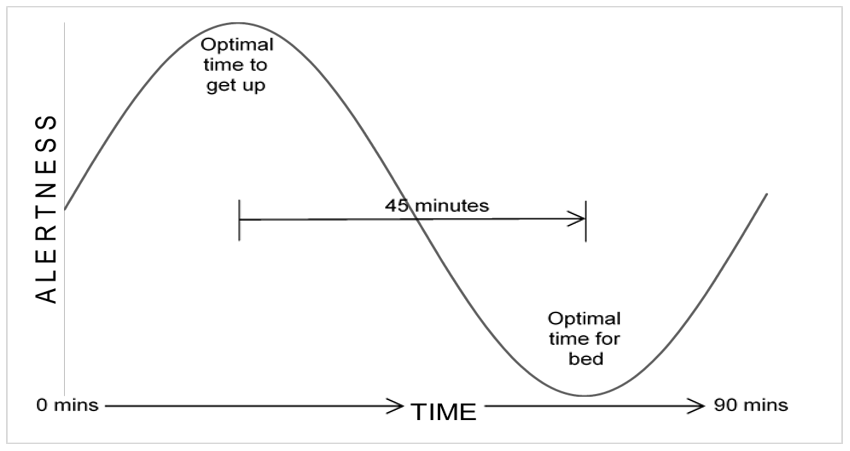There is a clock inside our brains, which operates continuously and without our conscious awareness, controlling a whole range of our physiological functions. This clock is not exclusive to humans, all animals and even plants have “rhythmicity”, periods of activity interspersed with regular periods of inactivity or quiescence. This rhythmicity was first noted as far back as 4BCE, but the first experimental evidence of their existence was conducted on plants in 1729 by a French scientist called Jean-Jacques d’Ortous de Mairan. Since then several periodicity genes have been identified, including: the CLOCK, PER1, PER2 and PER3 genes, simpler organisms have just one of these genes, more complex organisms have two, three or all four of these genes, whose effect is to provide the host organism with this internal, or endogenous, clock. Humans have all three of the PER genes and the CLOCK gene and these are known to affect the suprachiasmatic nucleus (SCN), which are two distinctive groups of cells at the back of the hypothalamus in the centre of our brains. This area of the hypothalamus controls many timing functions including our ultradian (less than a day, e.g. breathing / cardiac cycles), circadian (around a day, e.g. sleep and wakefulness) and infradian (more than a day, e.g. the menstrual cycle) rhythms.
Adult humans have a core ultradian rhythm of ninety minutes, and this is very regular. Even in people in the advanced stages of dementia, this endogenous rhythm clicks along continuously and many of our functions are controlled and influenced by it. The cycling of REM and Non-REM sleep follow this rhythm. Hunger and thirst, urine production, alertness, even creativity follow this rhythm, along with many other functions. This rhythm is usually referred to (incorrectly) as the human circadian rhythm.
Here are a couple of practical examples that help to explain the phenomenon: We are all familiar with a dip in alertness in the mid-afternoon, and another before we go to bed, at these times our ultradian rhythm is reaching a minimum, our alertness is at its lowest, and it is here when we can easily initiate sleep. If we wait half an hour though, our alertness is on the rise and we begin to reach a peak, this is when sleep is very difficult to initiate. If you have ever shifted your bedtime from its normal time, then it is often difficult to get sleep. For example: “I’ll be getting up early tomorrow to catch an early flight, so I’d better go to bed early,” and then you cannot get off to sleep until the usual time. Or, you go to bed later than usual and think: “Why can’t I sleep, it’s past my usual bedtime, I should be tired and so I should be able to get to sleep.” If you want to shift your bedtime from its usual slot then you need to move it by ninety minutes to catch the preceding, or succeeding, circadian dip.
Another example of the ultradian rhythm in action is something many people will be familiar with: the “Eureka moment.” If you have ever found yourself “blocked”, e.g. you cannot think of an answer in an exam; or you cannot seem to find the right words to express yourself when writing something; or you are not performing to your usual standard in a certain task etc. Then you are probably “dipping out” in your circadian rhythm. Leaving the task and returning to it forty-five minutes later and, suddenly, the answer is there, the words flow, the block has gone, the Eureka moment arrives – as your ultradian rhythm is peaking. This is easy to see in action if you ever watch professional tennis matches, or snooker on the television. These matches are long in duration and so it is possible to observe individual players performing well, and then later they seem to go “off the boil”. These fluctuations in performance are driven by the circadian rhythm.
There is a large, unexplored opportunity to use the ultradian rhythm to offset poor performance and optimise periods of high performance, not only in the sports arena, but in all our lives, both socially and professionally. Knowing your own rhythm and scheduling tasks and activities around it can enhance your performance and, perhaps more importantly, avoid tiredness-related errors and accidents.
Figure One below shows a simple illustration of one cycle of the ultradian rhythm.
The ultradian rhythm in adult humans has a period of ninety minutes, however, this is reduced in children and infants (Czeisler et al., 1980). The very young have ultradian rhythms of around forty-five to fifty minutes from birth and into the first year of life. The ultradian rhythm then extends out in toddlers and young children to around one-hour, before extending out again to the adult period of ninety minutes around mid-childhood (Bes et al., 1991).
For managing sleep problems, knowledge of one’s ultradian rhythm can be particularly useful. If someone is having trouble getting off to sleep, then this may be because they are attempting to do so at a peak in their ultradian rhythm, rather than a dip. Noticing when one is yawning early in the evening can allow for a quite accurate calculation of a bedtime that ‘catches’ a dip. If one is yawning at, say, 20:30, then they are likely to be ‘dipping.’ The next dip would be 90 minutes after this time, i.e. 22:00, and the next at 23:30, so preparing for bed, either at 21:45, or 23:15 so that one is ready, in bed, for sleep at 22:00 or 23:30,
Then this can optimise the chances of catching a ‘dip’ and getting off to sleep quickly.
If someone is waking regularly during the night, at say 2am, then it is then quite easy to calculate backwards to identify a suitable bedtime. Waking usually occurs at peak, so working backwards in epochs of 90 minutes will identify peaks in this person’s ultradian rhythm. So, if 2am is a peak, then so will be 00:30 and 23:00. Adding or taking away 45 minutes from these times will then identify ‘dips’ that would be good times for bedtime, i.e. 22:15 or 23:45. Furthermore, if someone is waking during the night, then they’ll need to wait around 45 minutes to catch the next dip in their ultradian rhythm before sleep is likely to be resumed. Many people whom wake during the night and struggle to get back off to sleep get frustrated during this time, lying in bed trying to force sleep to return. This is cognitively arousing and can lead to increased alertness that then staves off sleep through the next dip. Leaving the bedroom and finding something that is non-stimulating to occupy oneself during these 45 minute periods is recommended to avoid this frustration and consequent arousal.
During the daytime, try to avoid completing your tax return when you are dipping!




